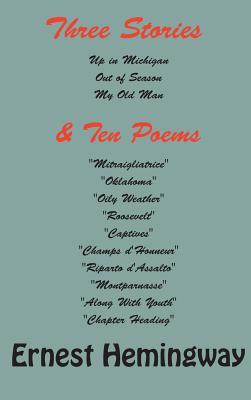During his first 20 months in Paris, Hemingway filed 88 stories for the Toronto Star newspaper. He covered the Greco-Turkish War, where he witnessed the burning of Smyrna, and wrote travel pieces such as "Tuna Fishing in Spain" and "Trout Fishing All Across Europe: Spain Has the Best, Then Germany". Hemingway was devastated on learning that Hadley had lost a suitcase filled with his manuscripts at the Gare de Lyon as she was traveling to Geneva to meet him in December 1922. The following September, the couple returned to Toronto, where their son John Hadley Nicanor was born on October 10, 1923. During their absence, Hemingway's first book, Three Stories and Ten Poems, was published. Two of the stories it contained were all that remained after the loss of the suitcase, and the third had been written early the previous year in Italy. Within months a second volume, in our time (without capitals), was published. The small volume included six vignettes and a dozen stories Hemingway had written the previous summer during his first visit to Spain, where he discovered the thrill of the corrida. He missed Paris, considered Toronto boring, and wanted to return to the life of a writer, rather than live the life of a journalist

During his first 20 months in Paris, Hemingway filed 88 stories for the Toronto Star newspaper. He covered the Greco-Turkish War, where he witnessed the burning of Smyrna, and wrote travel pieces such as "Tuna Fishing in Spain" and "Trout Fishing All Across Europe: Spain Has the Best, Then Germany". Hemingway was devastated on learning that Hadley had lost a suitcase filled with his manuscripts at the Gare de Lyon as she was traveling to Geneva to meet him in December 1922. The following September, the couple returned to Toronto, where their son John Hadley Nicanor was born on October 10, 1923. During their absence, Hemingway's first book, Three Stories and Ten Poems, was published. Two of the stories it contained were all that remained after the loss of the suitcase, and the third had been written early the previous year in Italy. Within months a second volume, in our time (without capitals), was published. The small volume included six vignettes and a dozen stories Hemingway had written the previous summer during his first visit to Spain, where he discovered the thrill of the corrida. He missed Paris, considered Toronto boring, and wanted to return to the life of a writer, rather than live the life of a journalist